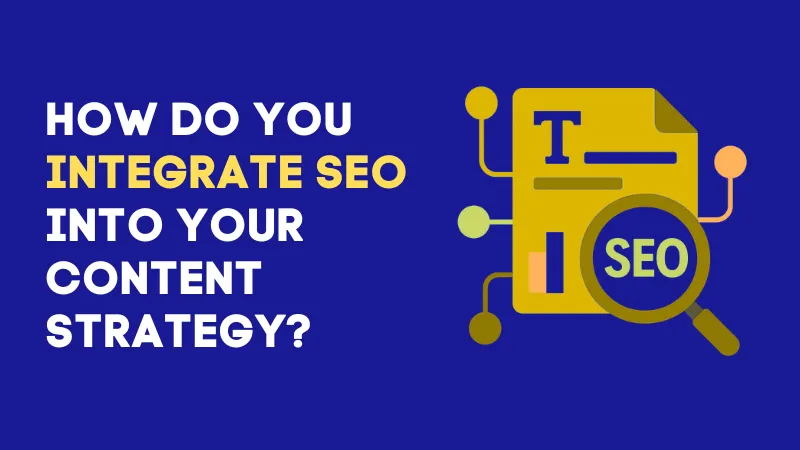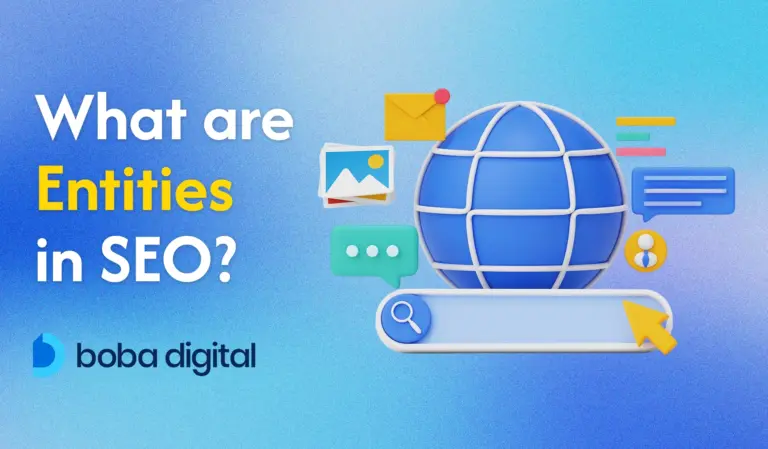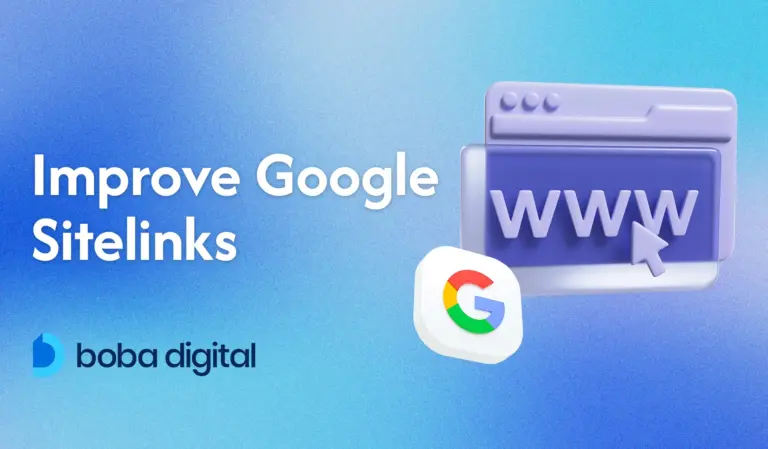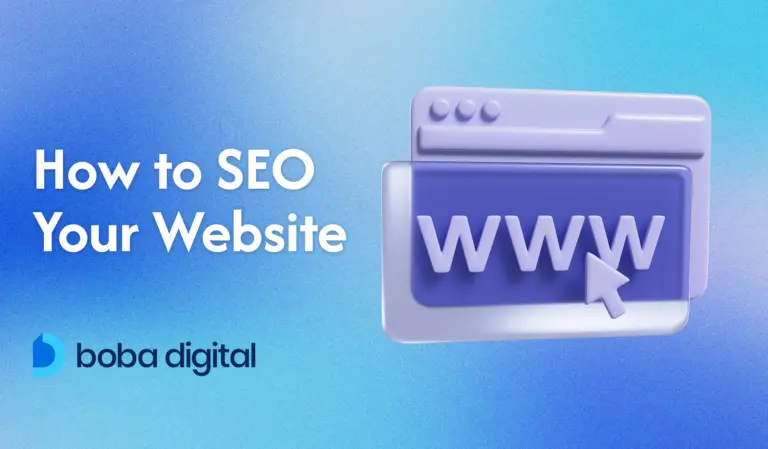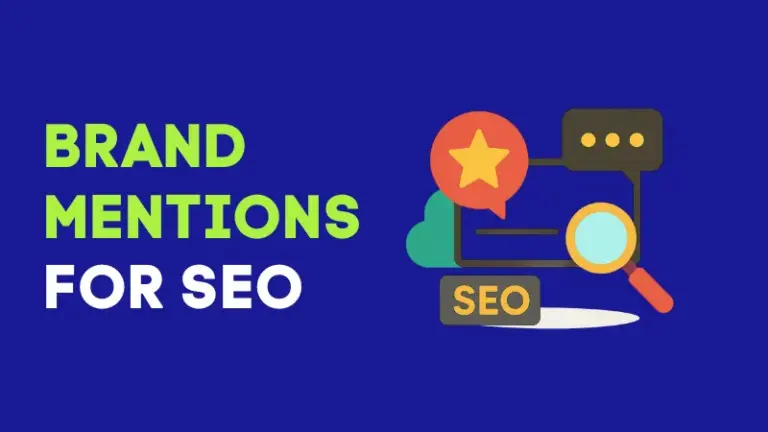How Do You Integrate SEO Into Your Content Strategy?
Ever wonder why your blog post disappears into the void while your competitor’s half-baked content shows up on the first page of Google search results? It’s not luck—it’s search engine optimization (SEO) done right. At its core, integrating SEO into your content isn’t about tricking search engines. It’s about speaking their language while still writing for humans.
When you create content that aligns with user searches, includes relevant keywords, and offers real value, you’re not just pleasing algorithms—you’re connecting with real people. And let’s be honest, your content deserves to be seen.
Think of SEO as the secret sauce that gives your words a louder voice.
So, how do you turn great writing into content that ranks? Let’s walk through it—step by step.
Why SEO Matters for Content Marketing Success
If content is king, SEO is the compass that guides it to the throne.
Without it, even the best-written articles are just words drifting aimlessly online—unseen and unclicked. Integrating SEO into your content means you’re not just writing to inform, but writing to be found.
Gone are the days of cramming a keyword into every other sentence.
Today, search engine optimization is less about pleasing search engine crawlers and more about helping them understand the real value of your content. Google’s algorithm now favors clarity, context, and intent.
That means writing relevant content for users first—while still weaving in SEO best practices like keyword optimization, structured data markup, and descriptive alt text.
Think of a local bakery writing a blog post about sourdough.
By using long tail keywords like “how to keep sourdough starter alive,” adding descriptive meta tags, and linking to other reputable websites (like food blogs or recipe forums), they’re not just helping search engines understand the content—they’re serving readers who are genuinely looking for that exact solution.
When your content lands on the first page of search engine results, users see it as a mark of authority. And authority builds trust. That trust can turn into clicks, leads, and ultimately, conversions.
Over time, this creates a compounding effect—more organic traffic, stronger brand visibility, and better positioning in future search engine results pages.
How Do You Integrate SEO Into Your Content?
Step 1: Research and Planning
Keyword Research
Before your fingers ever touch the keyboard, there’s one crucial thing to do: eavesdrop on your audience—but in a smart, non-creepy, totally strategic way.
That’s what keyword research is all about. It’s your chance to discover exactly what your potential readers are typing into search engines and how you can show up at the right time, with the right content.
Keyword research is the foundation of creating SEO friendly content.
It starts broad—think “healthy meals”—but gets powerful when you niche down to phrases like “30-minute gluten-free dinner recipes.” That’s where tools like Google Keyword Planner, Ahrefs, or SEMrush come in.
These tools help you explore keyword suggestions, analyze search volume, assess keyword difficulty, and uncover what’s already ranking in search engine results.
High search volume might be tempting, but sometimes, lower search volumes paired with ultra-relevance win the day.
For instance, a small online stationery brand might find better traction with a long tail keyword like “eco-friendly planners for college students” than with just “planners.” That specificity not only reduces competition—it improves conversions.
Want to get a leg up?
Check what other websites in your niche are writing about. A quick scan of your competitors’ blogs can help you identify keyword gaps and spot high-performing content you haven’t touched yet.
Tools like Google Trends also reveal when keywords spike—ideal for seasonal pushes or promotions.
You don’t need to break the bank, either.
Start with free tools like Google Keyword Planner, AnswerThePublic, or even Google Search autocomplete.
If you’re serious about keyword research, premium tools like SEMrush, Ahrefs, and Keyword Tool Pro offer detailed insights into search volume trends, competitor performance, and ranking factor benchmarks.
Audience and Search Intent
Imagine walking into a room and shouting your best sales pitch—only to realize everyone came for a yoga class.
That’s what creating content without understanding search intent feels like. You might be talking, but no one’s really listening.
A successful SEO strategy doesn’t start with writing—it starts with understanding why your audience is searching in the first place. Are they looking for information? Trying to compare options? Ready to buy?
This “why” is what we call search intent, and aligning your content with it is key to climbing search engine results pages and keeping readers engaged.
There are four core types of search intent:
- Informational (e.g., “how do you integrate SEO into your content”)
- Navigational (e.g., “Google Search Console login”)
- Commercial (e.g., “best budget laptops 2025”)
- Transactional (e.g., “buy noise cancelling headphones online”)
Each intent requires a different approach.
You wouldn’t write a product page for someone simply curious about what SEO means—you’d write an educational blog post instead.
On the flip side, if a user is ready to make a purchase, your content should guide them through the next step, not overwhelm them with theory.
To get into your audience’s head, start with practical steps.
Analyze the current search engine results for your target keywords. Are blogs ranking, or product pages? Are users looking for quick facts or in-depth guides? Tools like Google’s “People Also Ask” box and the Google search results themselves offer priceless clues.
Review competitor content—especially top-ranking pieces—to identify what users expect to see.
You also need to know who your readers are.
What’s their age group? What frustrates them online? What questions are they asking on forums or social media?
The better you know their needs and behavior, the easier it is to write relevant content that shows up in the right place, at the right time.
Content Calendar and Strategy
Let’s be honest—winging your content plan is like trying to run a marathon in flip-flops. You might move forward, but you’ll burn out fast and get nowhere near the finish line.
That’s where a well-built content calendar steps in—it keeps your SEO strategy consistent, focused, and effective.
Creating content without structure often leads to duplicate content, missed keyword opportunities, and scattered messaging. With a calendar, you’re not just hitting publish randomly—you’re building a story over time, using keyword research to target the right terms and formats.
Each blog post, video, or infographic is part of a bigger picture that boosts your website’s visibility and attracts more organic traffic.
A strong content calendar includes:
- Content titles based on your target keywords
- The search volume and difficulty of those terms
- The intended format (blog post, infographic, or even user generated content)
- Publication dates with room for seasonal trends or news hooks
- An SEO checklist that covers meta description, title tag, structured data markup, and on page optimization
To level up your strategy, use the pillar-cluster model.
Start with a comprehensive pillar page covering a broad topic—say, “Content Marketing for Small Businesses.” Then, surround it with cluster content like “how to do keyword optimization,” “creating content calendars,” or “meta tags best practices,” all internally linked.
This setup helps search engine crawlers understand your site’s architecture while guiding users through a logical content journey.
You don’t need fancy tools to make this work. Many businesses use free tools like Google Sheets to organize content plans.
But if your team prefers visual boards or automated reminders, platforms like Trello, Asana, or dedicated content workflow tools can help streamline the process.
Planning content in advance doesn’t just help with publishing—it helps with purpose. With the right structure in place, your content doesn’t just exist. It performs.
Step 2: Content Creation

Writing for SEO and Users
Ever clicked on a blog post that promised answers but delivered nothing but fluff and keyword overload?
That’s exactly what you want to avoid. Writing for SEO doesn’t mean sacrificing quality—it means pairing discoverability with real value.
The heart of great SEO content is writing for humans first.
Your audience isn’t looking for keyword-stuffed walls of text—they want clear, relevant, and genuinely useful information. Every sentence should be purposeful, solving a problem or answering a question they typed into Google search.
Google’s algorithm rewards content that keeps users engaged. The longer someone stays on your site, the more it signals to search engines that your content delivers what it promises.
That’s why your blog post should be informative, easy to read, and rich with insight—not just packed with target keywords.
When integrating relevant keywords, use them naturally and sparingly. Don’t force them into every paragraph.
Instead, focus on clarity and flow. Avoid keyword stuffing, and instead concentrate on maintaining readability while addressing the intent behind user searches.
To increase visibility on search engine results pages, write clear, compelling headlines and meta descriptions. These are your first impression on a potential reader scrolling through Google search results—make them count.
Keep them focused, descriptive, and aligned with what your content actually delivers.
Optimizing Content Elements
Your content might be packed with value, but if the page elements aren’t optimized, you’re handing over top rankings to your competitors.
On-page SEO is where the polish happens—it’s how you make sure both your readers and search engines clearly understand what your content is all about.
Start with your title tag. It’s not just a headline—it’s the handshake between your content and Google search results.
A clear, keyword-rich title that reflects search intent can boost clicks and improve your position in search engine results pages. Follow that up with a strong meta description—a short, compelling summary that entices users to click.
Think of it as your content’s elevator pitch.
Next, organize your article with proper headers. Use H1 for the main topic, H2s for major sections, and H3s (like this one) to structure subpoints. This helps users scan easily while signaling to search engine crawlers how your content is structured.
It also makes your content more digestible for visually impaired users relying on assistive tools.
Images? They’re not just there for aesthetics.
Always add descriptive alt text—it improves image optimization, helps your content appear in image search, and enhances accessibility.
And don’t forget to compress images to maintain page load speed, which is a ranking factor in Google’s mobile friendly test and overall website’s SEO performance.
For deeper SEO gains, use structured data markup to help search engines understand the context of your content.
This can lead to enhanced snippets, like review stars or FAQs, in search engine results.
To stay consistent, use a pre-publishing checklist. Include points like:
- Is the primary keyword in the title and meta description?
- Have you used descriptive alt text?
- Are headers logically structured?
- Did you check for duplicate content or missed internal links?
Optimizing content elements may seem small, but they’re the finishing touches that make your SEO efforts actually work.
It’s like dressing your best before stepping on stage—because visibility matters.
Incorporating Related Terms and Semantic Keywords
Ever read an article that keeps repeating the same phrase over and over—like it’s trying too hard to be noticed?
That’s keyword stuffing in action, and both users and search engines see right through it. Fortunately, there’s a smarter, more natural way to boost your content’s SEO: semantic keywords.
Semantic keywords are closely related terms and phrases that add context and richness to your content. Instead of repeating your primary keyword ten times, you can weave in variations and related concepts that mirror how real people search.
For example, if your main topic is “on page optimization,” including phrases like “meta tags,” “title tag,” or “descriptive alt text” gives your article depth—without overdoing it.
This strategy doesn’t just make your writing sound better. It also helps search engine crawlers understand what your page is about, improving how it’s categorized and displayed in search engine results.
When you use semantic terms correctly, you’re signaling to search engines that your content is authoritative, relevant, and informative.
To find these supporting terms, look beyond your main keyword. Tools like SEMrush, Google’s “related searches,” and even the “People Also Ask” section in Google search are goldmines for discovering what users really care about.
You’ll also pick up on variations in how people phrase things—helpful for capturing long tail keywords and improving your website’s visibility.
Strategically place these terms in your meta description, headings, image optimization elements, and throughout your body text.
Just make sure everything flows naturally—because while SEO matters, user experience is the real ranking factor that keeps people coming back.
Step 3: Enhancing User Experience
Visual Content Optimization
Think back to the last time you landed on a blog that looked like a textbook—nothing but endless blocks of text.
Odds are, you didn’t stick around for long. That’s exactly why visual content isn’t just a design choice—it’s a strategic part of on page optimization and user experience.
Images, infographics, and charts break up the monotony, helping your audience absorb information faster.
But for these visuals to actually support your SEO performance, they need to be optimized—otherwise, they’ll drag down your page speed and frustrate visitors.
Start with the basics: compress your images to reduce file size without sacrificing quality.
This improves page load speed, which search engines view as a key ranking factor—especially on mobile. Then rename your image files using relevant keywords (think “seo-strategy-chart.png” instead of “IMG_8329.jpg”).
Next, always add descriptive alt text.
This isn’t just good for image optimization—it helps visually impaired users navigate your content and gives search engine crawlers additional context.
Done right, it can even drive extra clicks from image-based Google search results.
Want to boost engagement even further?
Use visuals that simplify complex data. A quick infographic explaining the content marketing funnel or a chart comparing SEO strategies across industries can help readers understand your message faster—and stay on your page longer.
In short, your visuals should work just as hard as your text.
Optimized properly, they don’t just look good—they make your content more useful, more accessible, and more discoverable.
Mobile-Friendliness and Page Speed
You’ve put effort into writing strong, useful content—don’t let it fall apart on a phone screen.
With most users browsing on mobile, your content needs to load quickly and display correctly, or you risk losing people before they even start reading.
A responsive design ensures that your site adjusts to all screen sizes without breaking the layout or making users pinch and zoom to read.
This is not just a matter of convenience—it directly affects your position in Google search results and keeps readers from clicking away too soon.
Speed matters just as much.
Slow load times are one of the most common reasons visitors leave a page. Tools like Google PageSpeed Insights are free and reliable for spotting performance issues, such as large image files, poor browser caching, or unnecessary scripts.
Fixing these problems often requires input from a developer or technical SEO support, especially if you’re dealing with deeper code or mobile responsiveness issues.
But making those adjustments is essential for better search engine rankings and improved website performance.
Before sharing your article in a newsletter or on social media, test it on different devices. Check how fast it loads and how well the content fits the screen.
These last steps often make the biggest difference in whether your content gets read—or ignored.
Fast, responsive, and smooth. That’s how your content should feel—no matter where or how your readers find it.
Internal Linking and Site Structure
You can write the most informative article on your site, but if it stands alone without direction, readers may not know where to go next.
That’s where internal linking becomes essential—it connects your ideas and helps both users and search engines understand how your content is organized.
When building content, keep two link types in mind: internal links that guide readers to other parts of your website, and external links that point to reputable websites for supporting information or additional value.
While both serve a purpose, internal links are crucial for shaping your site’s structure and improving your overall SEO performance.
Linking related content improves navigation and spreads authority across your site. For example, if your blog post on “on page optimization” includes a link to a guide on writing compelling meta descriptions, it not only improves usability but also signals relevance to search engine crawlers.
This structure helps search engines index your pages more effectively and boosts your chances of appearing in search engine results pages.
Using a pillar-cluster model strengthens this even further.
A main pillar page focuses on a broad topic, while cluster content covers narrower, related subjects. Internal links between these pages establish clear topic relationships, guiding users and search engines through a logical flow.
The result?
A content layout that’s easier to maintain, easier to explore, and far more effective in improving your website’s visibility.
It’s not just about linking for the sake of SEO—it’s about creating a clear, useful experience across your entire site.
Step 4: Distribution and Promotion
Amplifying Reach
You’ve hit publish. Now what? The truth is, even the best-written, fully optimized content won’t perform if no one sees it.
Distribution is where your hard work starts gaining momentum.
Relying on organic search alone limits your content’s potential. To get more eyes on your post, share it across your owned channels—that includes social media, email newsletters, and any internal platforms your company uses.
While social signals don’t directly boost your search engine rankings, consistent sharing can drive more traffic, which may lead to backlinks, engagement, and improved visibility in Google search over time.
Make your content easy to share.
Use attention-grabbing visuals, short previews, and clear headlines that spark interest.
Whether it’s a quick tip carousel on Instagram or a curated article drop in your newsletter, the goal is to position your content where your target audience already spends time.
And don’t stop at your internal team.
Encourage cross-promotion through brand partners, industry connections, or influencers who align with your content.
A single mention or share from the right source can amplify your reach far beyond your existing network.
Building Backlinks and Authority
Search engines view backlinks as signs of credibility.
If reputable websites are linking to your content, that’s a strong indicator your site is worth trusting. This “link equity” helps pass authority from one domain to another, boosting your own SEO rankings and strengthening your site’s performance.
But good backlinks don’t appear out of thin air—you have to earn them.
One effective method is guest posting on relevant blogs or industry sites. Offer high-quality articles that naturally reference your content, and you’ll gain exposure while securing a valuable link.
You can also invest in digital PR—think expert commentary, original data reports, or pitching thought leadership content to journalists.
Creating content that’s genuinely useful or newsworthy increases your chances of getting picked up and shared.
And of course, focus on making your content worth linking to in the first place.
A well-designed blog post, rich with insights, visual elements, and helpful takeaways, is far more likely to get attention than a generic article sitting quietly in a corner of your website.
Promotion and link-building go hand in hand.
One gets your content in front of people. The other builds the trust and visibility needed to rise in search engine results—and stay there.
Step 5: Monitoring, Analysis, and Continuous Improvement
Tracking Performance
Publishing a piece of content isn’t the end—it’s the beginning of a feedback loop. If you’re not measuring how your content performs, you’re just guessing.
And guesswork rarely leads to better search engine rankings.
Tracking key metrics shows you what’s gaining traction and what’s falling flat. Start with the basics:
- Organic traffic tells you how well your content is pulling visitors from search engine results pages.
- Keyword rankings show whether your content is moving up for your target keywords or stuck in place.
- Engagement metrics like bounce rate and average time on page highlight whether users are finding what they expected—or clicking away too soon.
- And finally, conversions give you the most concrete measure of impact: how many readers are taking the next step, whether it’s signing up, purchasing, or contacting your team.
Free tools like Google Analytics and Google Search Console provide a solid foundation.
You can monitor search queries, top-performing pages, and crawl issues that affect your website’s visibility.
If you need deeper insights, platforms like Ahrefs, SEMrush, or other analytics suites offer advanced reporting features that track SEO performance over time.
Review your data regularly—not just to celebrate wins, but to uncover missed opportunities.
Maybe a blog post has great traffic but poor conversions. Or a piece you wrote months ago is suddenly ranking—time to update it and build on that momentum.
Improving your content marketing strategy isn’t about making big changes all at once.
It’s about observing, adjusting, and refining—until every page on your site works a little harder than it did the week before.
Iterating Based on Data
Publishing great content is important—but evolving it is what keeps you ahead.
Algorithms change. Search behavior shifts.
What ranked well six months ago might now be buried under newer, more optimized pages. That’s why iteration isn’t a bonus step—it’s part of the process.
Iteration means using performance data to make informed adjustments. Maybe a post ranks on page two for a high-value long tail keyword—a small update could push it to page one.
Or perhaps a guide is still getting traffic but mentions outdated stats or tools. Updating that content strengthens its value and shows search engines you’re keeping things fresh.
Set a rhythm for content reviews—quarterly works well for most sites.
During each review, identify your top-performing pages in Google Analytics and Google Search Console. Are there new target keywords you can incorporate? Can you improve the meta description, add descriptive alt text, or expand the coverage with new sections?
Regular content audits help you spot thin content, address duplicate content, and reoptimize for better user engagement.
This isn’t about starting from scratch—it’s about refining what already works and aligning it with what your target audience now expects.
Look at brands like Airbnb or Amazon. Their content evolves constantly, based on what people are searching, clicking, and asking.
It’s no accident they stay competitive—it’s the result of structured iteration built into their content marketing strategy.
The more consistently you refine your content, the more resilient your site becomes—ready to respond to updates, shifts in demand, and new opportunities.
Growth doesn’t happen from a single perfect blog post. It comes from showing up, reviewing what matters, and making the next version even better.
Conclusion
SEO success isn’t built overnight—it’s shaped through strategy, structure, and steady improvement. From thoughtful planning and keyword research to content optimization, distribution, and performance tracking, each phase plays a part in keeping your content competitive and discoverable.
But ranking well isn’t the end goal. The real win comes when your content answers questions, meets user intent, and earns trust—all while helping search engines understand your relevance. It’s this balance between quality and visibility that fuels long-term growth.
At Boba Digital, we don’t just focus on keywords—we build SEO strategies that drive results and make your content worth finding. Whether you’re refining what already exists or starting fresh, we’ll help you turn content into a consistent source of organic traffic and conversions.
Ready to put your content to work?
Let’s talk—because real SEO is more than rankings. It’s smart, sustainable growth.
FAQs
Why is it important to integrate SEO into content creation?
Integrating SEO into your content helps search engines understand what your page is about, which boosts your website’s visibility in search engine results pages. It also increases your chances of attracting organic traffic from users actively searching for your topics. When done right, search engine optimization connects your content with the right target audience, improves keyword rankings, and enhances overall SEO performance.
How do I choose the right keywords for my content?
Start by identifying your primary keyword—what users are likely to type into Google search. Use tools like Google Keyword Planner, SEMrush, or Ahrefs to analyze search volume, keyword difficulty, and related search terms. Look for a balance between relevance and competitiveness. Don’t ignore long tail keywords or terms with lower search volumes—they often bring in highly targeted traffic. It also helps to browse competitor content and use Google Search Console to spot gaps and opportunities based on real user behavior.
How often should I update my SEO-optimized content?
A good rule is to review and refresh your content every quarter, especially if it targets high search volume keywords or ranks on the first few pages of Google search results. Regular updates signal to search engine crawlers that your content is current and relevant. During each content audit, revisit your meta title, meta description, structured data markup, and any outdated information. Expanding sections, adding descriptive alt text for images, and optimizing for new relevant keywords can help maintain or improve your SEO rankings.
Should I prioritize users or search engines when writing content?
Always write for your audience first. Content should be easy to read, informative, and relevant to user intent. But you also need to guide search engine crawlers by incorporating target keywords, crafting a strong meta description, and following on page optimization practices.
How can I measure the effectiveness of my SEO integration?
Use tools like Google Analytics and Google Search Console to monitor how well your content performs. Track key metrics like organic traffic, keyword rankings, bounce rate, and time on page. A rise in search engine results visibility or conversions is a sign that your SEO strategies are working. You can also check if your content is appearing for more search terms, gaining backlinks from reputable websites, or improving page load speed and mobile usability.

